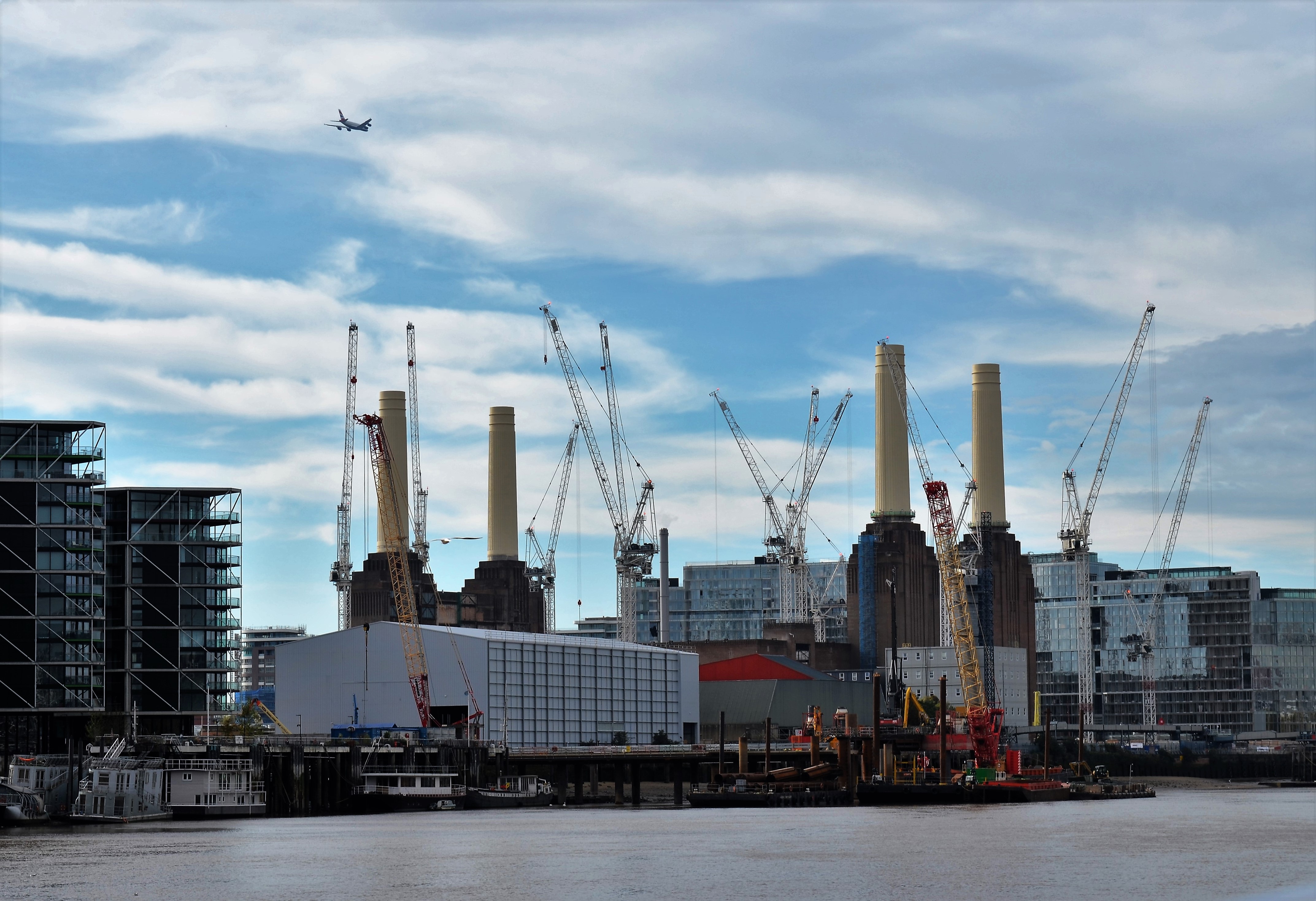 By Riccardo Crescenzi (LSE)
By Riccardo Crescenzi (LSE)
The beauty contest between a number of USA cities to host the new Amazon base has unveiled how important the location of major companies is for regional and city development. However, it also showed how difficult it is for cities and regions to gain from what is potentially a race-to-the-bottom where only big Multinationals are the winners. Uncertainty over the re-location of major companies Headquarters following Brexit runs the risk to spark similar reactions.
What drives foreign investment to some cities and regions of the world, but leaves others almost completely untouched? And what can cities and regions do in order to attract those investments?
Traditionally, scholars have tried to understand this by looking at things like market access, skills, the price of land, tax regimes, corruption levels and so on – on that basis, they make a judgement about which countries seemed attractive to investors.
However, what attracts flows of investment around the world is not only about countries, but something on a much more local level. The story of globalisation is in many ways about certain sub-national regions all over the world connecting with each other. Firms are less interested in what a country offers them, but what they get from an individual city or region.
This new video by the LSE GILD (Global Investment Local Development) team discusses new evidence on the location choices of global investments. New and ongoing research has looked at tens of thousands of investments across the globe, region-by-region, project-by-project. What becomes obvious, is that firms are attracted to a specific set of local conditions. And what seems attractive varies enormously depending on firm strategies, sectors and Global Value Chain stage of the investment.
So when picking an investment destination, how does a company choose? What are the key deciding factors? How do you attract the new Amazon base or poach a global headquarters away from post-Brexit London?
First, new research unveils what types of investments respond to national level attraction factors and what types of activities are instead responsive to local factors. An illuminating example in this regard is offered by the incentive packages offered by hundreds of North American cities to try and attract Amazon’s second headquarter[1]. In September 2017, Amazon solicited bids to host its Headquarter 2 and 238 US cities participated in this ‘beauty context’ where “incentives offered by the state/province and local communities to offset initial capital outlay and ongoing operational costs will be significant factors in the decision-making process”[2].
While this competition made apparent the importance of external investment to local communities, recent research shows that the location decisions of Head Quarters are fundamentally influenced by national considerations[3]. Other, sub-national factors are of secondary importance. Failure to understand this simple fact offers fertile ground for the type of territorial competition that we have seen in the Amazon HQ2 case. Many candidate cities did not realise that they had little to offer for the location of a HQ except for economic incentives, contributing to a potential race to the bottom that can only benefit Amazon. Similar considerations apply to the location decisions of major Multinationals following Brexit. Where might Headquarters go if leaving (or downsizing) London? What cities and regions can offer is of limited importance for these decisions. National-level strategic considerations will dominate post-Brexit location decisions and ‘beauty contests’ among EU cities for Headquarters would only favour big Multinationals.
On the contrary, while national factors can be the key factor is some decisions, local factors (beyond economic incentives) are central to the location of other types of activities. Our research shows that a range of factors determines location decisions; crucially, it is the interaction and the ‘matching’ between investing-firm and location characteristics (from regional specialisation profiles to innovative capabilities and human capital) that influence the location decisions of multinational firms. So the location choice is a marriage between two partners: regions and firms. Hence both partners are integral for a successful and fruitful ‘union’ that leads to mutual benefits[4]. This fruitful union is hard to achieve where subsidies paid for by the local community are central to the decision.
Firms look for different locations for different activities. Instead of focusing on sectors, it is important to look closer, not just to individual firms, but even to the range of different activities that a firm can undertake – for example, R&D, manufacturing or marketing – to understand what activities can offer the best match with the local environment .For example, research shows that R&D investments are targeted on the sub-national locations which Multinationals think are good for innovation, like university towns with their dynamic and collaborative environment. There is much more that local policy makers can do for this beyond economic incentives. Overall, it’s not the sector that matters for where firms locate, but rather it’s the type of activity (e.g. Headquarter vs. R&D) or the Value Chain stage that drives the sorting into a range of locations.
But even then, firms from different places around the world make their decisions based on very different things[5] – for example when investing in Europe, a German car manufacturer will do things very differently to a Malaysian one. In part that’s because investors from emerging markets tend not to have the same business culture and practices compared to the European countries they are targeting – indeed investing in advanced economies at all might be fairly new to them. That makes it more difficult to compare overseas cities and regions based on some of the “softer” factors which firms from more advanced economies can often make their decisions on – things like whether a region is good for innovation. Instead, they ultimately rely more on the clearer, “traditional” factors – like whether there’s already a build-up of similar firms in the region – which appears to them like a safer bet.
And the specific way firms make investments, also depends enormously on the location – for example, whether it’s the type of place that multi-nationals see as being ripe for buying up existing local firms (i.e. via acquisitions) or, instead, where it’s somewhere to start an entirely new venture from scratch (i.e. Greenfield investments)[6]. Here, new research shows that the quality of local government, for example a combination of things like low local corruption and an efficient planning system, makes a huge difference to attract foreign and innovative firms in starting new ventures.
When trying to understand why some cities and regions of the world suck in vast flows of investment[7], while others are left seemingly untouched, it’s essential to understand the way that different kinds of firms (e.g. Multinationals from Advanced Economies vs. Emerging Economies) sort themselves into different regions depending on the type of investment (e.g. Greenfield vs. Acquisitions) or activity (e.g. R&D vs. HQ or Production). A deeper understanding of the logic of these decisions is of fundamental importance for policymakers to effectively interact with Multinationals, identify what they can realistically (and fruitfully) attract and retain in their jurisdictions and get a better deal for their citizens than many US cities would have achieved in winning the Amazon HQ2 bid. In a post-Brexit world both EU and UK cities need a careful evidence-based diagnosis of their true ‘unique selling points’ in front of these global players if they are to avoid similar risks.
Riccardo Crescenzi is a Professor of Economic Geography at the London School of Economics
[1] https://www.ft.com/content/f9f2b3bc-5eaa-11e8-9334-2218e7146b04
[2] https://blog.aboutamazon.com/company-news/amazon-selects-new-york-city-and-northern-virginia-for-new-headquarters
[3] Crescenzi R., Pietrobelli C. & Rabellotti R. “Innovation Drivers, Value Chains and the Geography of Multinational Corporations in Europe”, Journal of Economic Geography, 14 (6), 1053-1086, 2014, https://doi.org/10.1093/jeg/lbt018
[4] Arnold D., Crescenzi R. & Petralia S. “The internationalisation of R&D: internal and external drivers of global location decisions” paper presented at the Winter Conference of the Regional Studies Association 2018 (mimeo)
[5] Crescenzi R., Pietrobelli P., Rabellotti R. “Regional strategic assets and the location strategies of Emerging Countries’ Multinationals in Europe“, European Planning Studies, 24(4), 645-667, 2016 http://dx.doi.org/10.1080/09654313.2015.1129395
[6] Amendolagine V., Crescenzi R. & Rabellotti R. “FDI mode, firm heterogeneity and institutional conditions” paper presented at the 9th international conference on Economics of Global Interactions, 2018.
[7] Crescenzi R. and Iammarino S., “Global Investments and Regional Development Trajectories: the Missing Links“, Regional Studies, 51(1), 97-115, 2017, [Open Access]







One of the most insightful pieces of research into FDI location decision-making – and its practical interpretation – that I have seen for some time.
It should be essential reading for the countless national, regional, local and city IPAs operating around the world that are striving to attract investors, but are for the most part working blind on whether the resources they deploy and the activities they undertake are really effective or not.